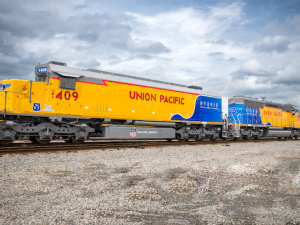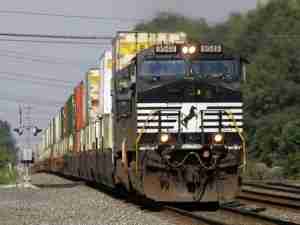At joint news conferences in Des Moines, Iowa; Memphis, Tennessee; and Harrisburg, Pennsylvania, the American Association of State Highway and Transportation Officials (AASHTO) today released Unlocking Freight, an analysis of America's freight system that finds our highways, railroads, ports, waterways, and airports require investments well beyond current levels to maintain ' much less improve ' their performance. The report identifies key projects in 30 states that would improve freight delivery and dependability, and offers a three-point plan to address what is needed to relieve freight congestion, generate jobs and improve productivity.
AASHTO President and Mississippi DOT Executive Director Larry L. 'Butch' Brown said, 'The simple fact is: no transportation, no economy. They are inseparable. We must invest to maintain and strengthen the American 'transconomy.'' At the Annual Meeting of the Mississippi Valley Conference of State Highway and Transportation Officials (MVC) in Des Moines, Brown said, 'Congress must invest in all transportation modes; from waterways to roads and rails to get us where we need to be as a competitive nation. Millions of jobs and our nation's long-term economic health depend on it.'
Despite more long-distance freight being moved by intermodal rail, the report finds that trucks will still carry 74 percent of the load. On average, 10,500 trucks a day travel some segments of the Interstate Highway System today. By 2035, this will increase to 22,700 commercial trucks for these portions of the Interstate, with the most heavily used segments seeing upwards of 50,000 trucks a day. Yet between 1980 and 2006, traffic on the Interstate Highway System increased by 150 percent while Interstate capacity increased by only 15 percent. The report identifies the 1,000 miles of most heavily traveled highways used by trucks.
In a related news conference releasing the report in Pennsylvania, Governor Edward Rendell stood at the Norfolk Southern Intermodal Facility in Harrisburg and said, 'This report outlines what's at stake if we fail to invest to meet the growing demands on our transportation infrastructure. This includes the roads, rails, and seaports we need to move raw materials and goods to market and keep our economy globally competitive.'
'As the gateway to the Northeast, Pennsylvania gets more than our share of truck traffic,' Rendell said. 'In fact, Pennsylvania is one of six states -- along with Arkansas, California, Georgia, Tennessee and Texas -- that collectively account for 88 percent of the most heavily used truck routes.'
'It's unfortunate that many of the 35 million travelers who hit the road for the Fourth of July holiday this past weekend spent hours of their vacation time stuck in traffic,' said John Horsley AASHTO's executive director. 'Ten thousand commercial trucks face that kind of gridlock everyday.'
MVC President and Iowa Department of Transportation Director Nancy Richardson said at the Iowa news conference that her state's agricultural and manufacturing supply chain is crucial to the economic recovery, stability, and growth of Iowa and the nation. States 'need greater investment and sound federal transportation polices to allow them to expand capacity when and where necessary.'
MVC Vice President and Minnesota DOT Commissioner Thomas Sorel said, 'The Port of Duluth-Superior is an example of hundreds of freight-related projects in desperate need of greater investment. It's one of the largest inland seaports in the world, bringing in iron ore and coal docks, grain elevators and specialize







